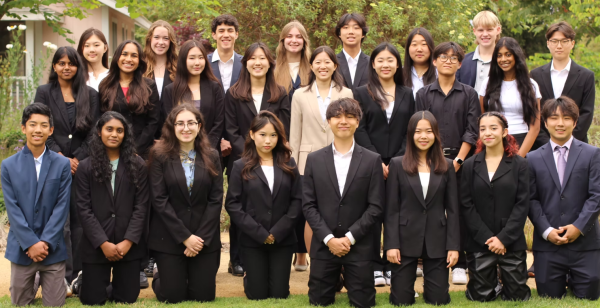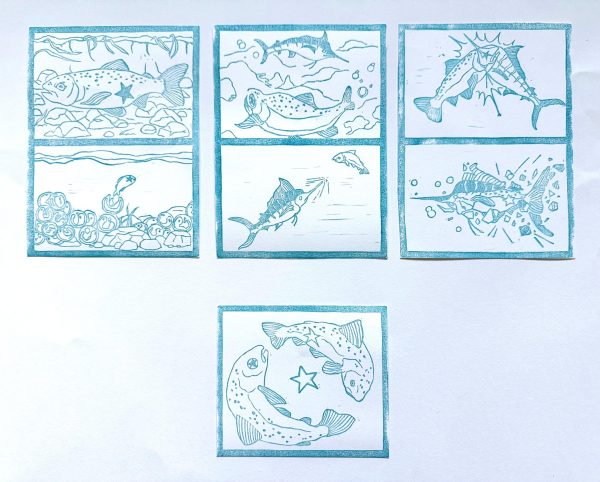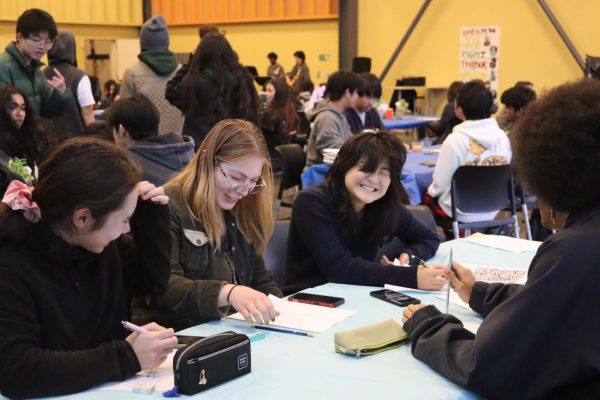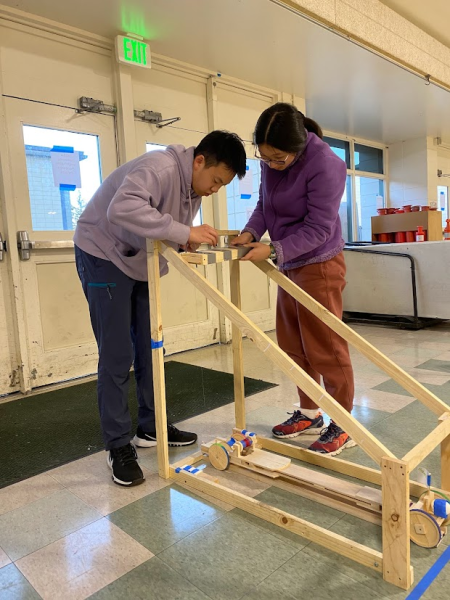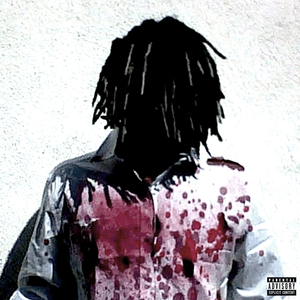Homestead Cancer Society presents for Breast cancer awareness month
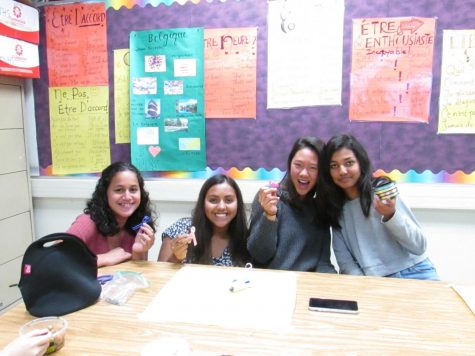
CONTINUING THE TRADITION: From left: Tamra Tawakol (10), Surbhi Yadav (10), Bebel Yen (10), Khushi Thapa (11). According to Cure, in the early 1990s ribbons were first used to represent cancer awareness. Today, the practice still continues with ribbons in a multitude of colors.
Ribbons have been a symbol of cancer awareness for decades. According to cancer magazine, these ribbons originated in the early 1990s.
Although today pink is the most recognizable color, a number of colors can be used to bring awareness to the many types of cancer. In its ribbon making event, Homestead Cancer Society offered a variety of ribbons to club members and others interested in raising cancer awareness.
“We just kind of think of breast cancer as pink,” Homestead Cancer Society officer senior Cassidy Biellack said. “This year our one of our bracelets that represents breast cancer is three different colors to represent the colors of metastatic breast cancer.”
Metastatic breast cancer is the fourth and most dangerous stage of breast cancer, Homestead Cancer Society officer Sophomore Adiel Zaghi said. Both Biellack and Zaghi gave a presentation on breast cancer to mark October as breast cancer awareness month.
“The survival rates [for breast cancer] are relatively the same stage zero and stage one are really high: 100 percent,” Zaghi said. ”Stage two is 90 percent … but at stage three and four, the survival rates drastically drop and that’s when it becomes very fatal. Stage four and stage three is where it starts spreading to other parts of your body like your lungs and your heart.”
Presentations such as these are an important part of Homestead Cancer Society, Zaghi said.
“Something really special about this club is that we not only spread awareness,” she said, “but we also inform a lot of our club members. A lot of our club members just know what cancer is, but they don’t really know how it affects people and how people get it, [along with] the symptoms and the harsh reality of it.”
In addition to helping club members gain a full understanding of the effects that cancer has, Homestead Cancer Society directly helps cancer patients and others affected by cancer through its volunteer opportunities and fundraisers, Zahgi said.
“We donate all the money from the entire year to Cancer CAREpoint, which is a non-profit,” Zahgi said. ”They take the money that we donate and they give it to patients in need, their families and even their doctors to provide a lot of care which they wouldn’t have [otherwise].”
In the future for Homestead Cancer Society is Light the Night, international events organized by the Leukemia and Lymphoma society that are highly visual, utilizing colored lanterns to represent those affected by cancer.
“There are three different categories,” sophomore Isabelle Wagner said, “the yellow [lantern] is someone in your family has died of cancer, white represents survivors who have survived cancer or are going through it right now, red is supporting [those with cancer].”
The visual aspects of these events are augmented by the personal stories of those who carry the lanterns.
“People that have white lanterns, they go in the middle and there are some stories that are being told of the some of the kids that are going through [cancer] or have survived,” Wagner said. “We walk around the stadium to different lights and you get to talk to people. We get to volunteer from the stations with the organizers.”



